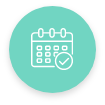Learn Piano from the Best Tutors
Search in
Asked by Dr. Rajani Last Modified

Sadika
Related Questions
Now ask question in any of the 1000+ Categories, and get Answers from Tutors and Trainers on UrbanPro.com
Ask a QuestionRecommended Articles
Ways to improve your Piano playing skills
So you have started your Piano classes, great move! Remember, don’t be in a hurry to learn everything together because it will not take you to your goals. Rather, it will make you more confused. Take your time to understand each notes, intervals, scales and chord patterns before jumping into higher lessons. Patience is...
Read full article >
Choosing the right musical Instrument
Playing a musical instrument for personal pleasure and release is a great way to go. You may be thinking about learning to play an instrument and wondering how to pick your musical instrument...one that will be most suitable for you. Musical instruments, even electronic keyboards, will be an excellent investment....
Read full article >
Guitar Hall -- Guitar Academy and Boutique, Mumbai
Guitar Hall The philosophy at Guitar Hall chain of academies is simple and effective: Learn what you want to know to have fun and play the songs and music you enjoy. Learn what you need to know to become the knowledgeable, creative and self-reliant musician you desire to be. This balanced approach between immediate enjoyment...
Read full article >
Vote for your favorite UrbanPro Rising Stars 2023!
Get ready to witness some spectacular talent as UrbanPro Rising Stars 2023 is all set to empower and encourage student excellence! After receiving an overwhelming response over the last few weeks, we've finally come up with a shortlist of the most exceptional students in drawing, dancing, singing, and playing musical instruments. And...
Read full article >
Looking for Piano Classes?
Learn from the Best Tutors on UrbanPro
Are you a Tutor or Training Institute?
Join UrbanPro Today to find students near youThe best tutors for Piano Classes are on UrbanPro

The best Tutors for Piano Classes are on UrbanPro